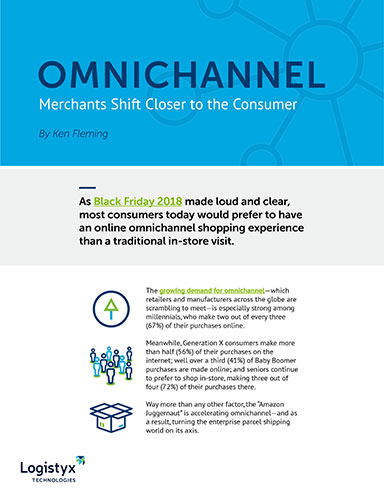Merchants Shift Closer to the Consumer
As Black Friday 2018 made loud and clear, most consumers today would prefer to have an online omnichannel shopping experience than a traditional in-store visit.
The growing demand for omnichannel—which retailers and manufacturers across the globe are scrambling to meet—is especially strong among millennials, who make two out of every three (67%) of their purchases online.
Meanwhile, Generation X consumers make more than half (56%) of their purchases on the internet; well over a third (41%) of Baby Boomer purchases are made online; and seniors continue to prefer to shop in-store, making three out of four (72%) of their purchases there.
Way more than any other factor, the “Amazon Juggernaut” is accelerating omnichannel—and as a result, turning the enterprise parcel shipping world on its axis.
Amazon now commands 43% of all e-commerce sales—which means that for every dollar consumers spend online, Amazon gets 43 cents, leaving all its competitors in a brawl for the remaining pennies.
What’s Related




Favorites





